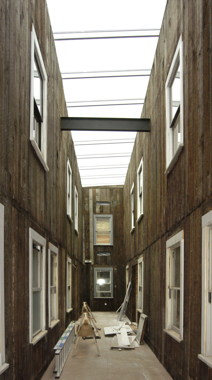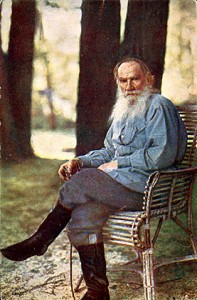With the summer solstice having hit town at precisely 4:59 p.m. Friday — was that a sylph we saw cavorting in the woods? — it’s a semi-beautiful weekend here in Portland, Oregon.
All right, clouds are moving in. Yet we are undaunted. Some cool things are happening around and out of town involving Friends of Art Scatter (this is not an official organization, but we like the sound of it, though not as much as we like the sound of “The Loyal Order of Moose”) and we would be remiss not to fill you in on the upcoming action. Some of these are this-weekend-only opportunities, so get on your dancing shoes, and don’t let the door hit you on your way out of the house.
 Subversive operatics at Someday Lounge: We like Opera Theater Oregon. How much? Read our report on OTO’s winter production of “Carmen,” sung live to a screening of Cecil B. DeMille‘s 1915 silent-movie version of the Bizet opera. So we are happy to report that this seat-of-the-pants company, which dares to believe that opera ought to be fun (its motto is “Making Opera Safe for America”), is throwing a one-night wingding Saturday at Someday Lounge to show off its new season, raise a little money (there’ll be a silent auction) and generally blow the art form’s reputation for stuffiness all to hell.
Subversive operatics at Someday Lounge: We like Opera Theater Oregon. How much? Read our report on OTO’s winter production of “Carmen,” sung live to a screening of Cecil B. DeMille‘s 1915 silent-movie version of the Bizet opera. So we are happy to report that this seat-of-the-pants company, which dares to believe that opera ought to be fun (its motto is “Making Opera Safe for America”), is throwing a one-night wingding Saturday at Someday Lounge to show off its new season, raise a little money (there’ll be a silent auction) and generally blow the art form’s reputation for stuffiness all to hell.
“Gypsies, Tramps & Thieves” will preview the three-show season of Gian-Carlo Menotti’s “The Medium” (paired with a 10-minute original called “The Head of Mata Hari”) in October, “Camille Traviata” (music from Verdi’s opera accompanying the 1921 silent-movie “Camille” with Alla Nazimova and Rudolph Valentino) in February ’09, and “Das Rheingold” (a scrunching-together of the Wagnerian wallbanger with an episode of television’s “Baywatch”) in June ’09. All shows at the Someday Lounge, where you can drink to all that.
Bonus attraction Saturday night: OTO performs Queen’s “Bohemian Rhapsody” with Classical Revolution PDX and Karaoke From Hell. Ouch, we think.
7 p.m. Saturday, Someday Lounge. $25, $40/couple, 10 bucks if you just show up for the after-party from 9 until the cows come home.
 Loie Fuller in the Columbia Gorge: Maryhill Museum of Art, our favorite concrete castle on a cliff with a backside view of Mt. Hood within easy driving distance of Portland (see our report on its affiliated Stonehenge replica) was established by visionary engineering entrepeneur Sam Hill as his home and the center of what he hoped would be an agricultural utopia. That failed, but three of his far-flung friends — Queen Marie of Romania, San Francisco dowager Alma de Bretteville Spreckels (wife of the sugar king) and Loie Fuller, the American girl who became an interpretive dance sensation in Paris — turned the place into one of America’s unlikeliest, and quirkiest, art museums.
Loie Fuller in the Columbia Gorge: Maryhill Museum of Art, our favorite concrete castle on a cliff with a backside view of Mt. Hood within easy driving distance of Portland (see our report on its affiliated Stonehenge replica) was established by visionary engineering entrepeneur Sam Hill as his home and the center of what he hoped would be an agricultural utopia. That failed, but three of his far-flung friends — Queen Marie of Romania, San Francisco dowager Alma de Bretteville Spreckels (wife of the sugar king) and Loie Fuller, the American girl who became an interpretive dance sensation in Paris — turned the place into one of America’s unlikeliest, and quirkiest, art museums.
On Saturday Maryhill is sponsoring a day-long series of events in celebration of Fuller’s life and art, to culminate in an evening performance in the nearby city of The Dalles by the New York company Jody Sperling and Time Lapse Dance, which will perform three dances inspired by Fuller. 7 p.m. Saturday at At the Dalles-Wahtonka High School Auditorium,
220 E. 10th Street, The Dalles; $7-$10.
Looks like a swell day trip, and if you need a break, some good wineries are nearby. The mammoth Maryhill Winery is just down the road from the museum; we’re also partial to the little, high-quality Syncline Cellars in nearby Lyle, Wash. (The poster shown here, part of the museum’s permanent collection, is by Alfred Choubrac, who with his brother Leon was one of Paris’ first poster designers in the 1880s, anticipating Toulouse-Lautrec. She’s probably doing Le Papillon, her butterfly dance.)
 Glass at the Portland Japanese Garden: As many of you know, Portland is Glass City, U.S.A. this summer, with a major retrospective of the work of contemporary master Klaus Moje at the Portland Art Museum through Sept. 7, the annual international conference of the Glass Art Society this weekend, and glass work on view at about 40 galleries and other spots around town.
Glass at the Portland Japanese Garden: As many of you know, Portland is Glass City, U.S.A. this summer, with a major retrospective of the work of contemporary master Klaus Moje at the Portland Art Museum through Sept. 7, the annual international conference of the Glass Art Society this weekend, and glass work on view at about 40 galleries and other spots around town.
One of those “other” spots is the beautiful and soul-refreshing Portland Japanese Garden, where work by six Japanese or Japanese American glass artists is on view. The work of five (including onetime Moje students Yoko Yagi and Etsuko Nishi) are inside the Pavilion through June 30. But bigger-scale outdoor installations by one of our favorite artists, Jun Kaneko, remain on the grounds through July 31. “This Kaneko piece seems as if it has always been in the Garden,” Diane Durston says of the serene glass bridge in the photo above. We first got to know Durston, the garden’s curator of culture, art and education, when she was the director of education for the Portland Art Museum, and we trust her taste and enthusiasms.
 The return of Chamber Music Northwest: One of Portland’s most congenial summer traditions returns Monday night for its 38th season, and we’re not afraid to say we’re looking forward to it. Sure, the crowd’s heads are largely streaked with silver, but these are geezers (and we count ourselves as part of that category) who know a good time when they see one. Great musicians playing great music under very Portland-friendly conditions: no leader onstage, just a small group of talented artists working on something together, and paying attention to the nuances that requires. Scatter pal David Stabler gives details in The Oregonian; we’re looking forward to festival vet Fred Sherry doing a little Wuorinen and Schoenberg’s first 12-tone quartet on July 12.
The return of Chamber Music Northwest: One of Portland’s most congenial summer traditions returns Monday night for its 38th season, and we’re not afraid to say we’re looking forward to it. Sure, the crowd’s heads are largely streaked with silver, but these are geezers (and we count ourselves as part of that category) who know a good time when they see one. Great musicians playing great music under very Portland-friendly conditions: no leader onstage, just a small group of talented artists working on something together, and paying attention to the nuances that requires. Scatter pal David Stabler gives details in The Oregonian; we’re looking forward to festival vet Fred Sherry doing a little Wuorinen and Schoenberg’s first 12-tone quartet on July 12.
Through July 27; Reed College and Catlin Gabel School. (The photo is of cellist Sophie Shao and pianist Pei-Yao Wang in last summer’s “Schubertiade.”)
 Earlier, we were musing about the alleged death of the sentence. We didn’t understand it. Didn’t we frequently, ourselves, muster a sentence or two? But then the Voice Inside Our Head replied, rhetorically, “You call that a sentence?” Our sentences weren’t just NOT sentences; they actually killed The Sentence as they were constructed. We sometimes hate the Voice Inside Our Head. How could we not?
Earlier, we were musing about the alleged death of the sentence. We didn’t understand it. Didn’t we frequently, ourselves, muster a sentence or two? But then the Voice Inside Our Head replied, rhetorically, “You call that a sentence?” Our sentences weren’t just NOT sentences; they actually killed The Sentence as they were constructed. We sometimes hate the Voice Inside Our Head. How could we not?











